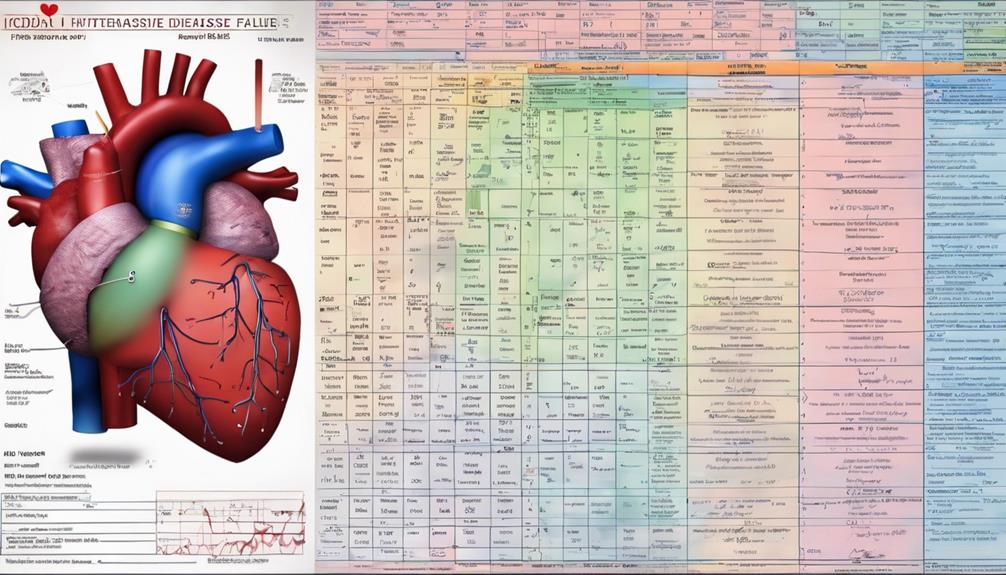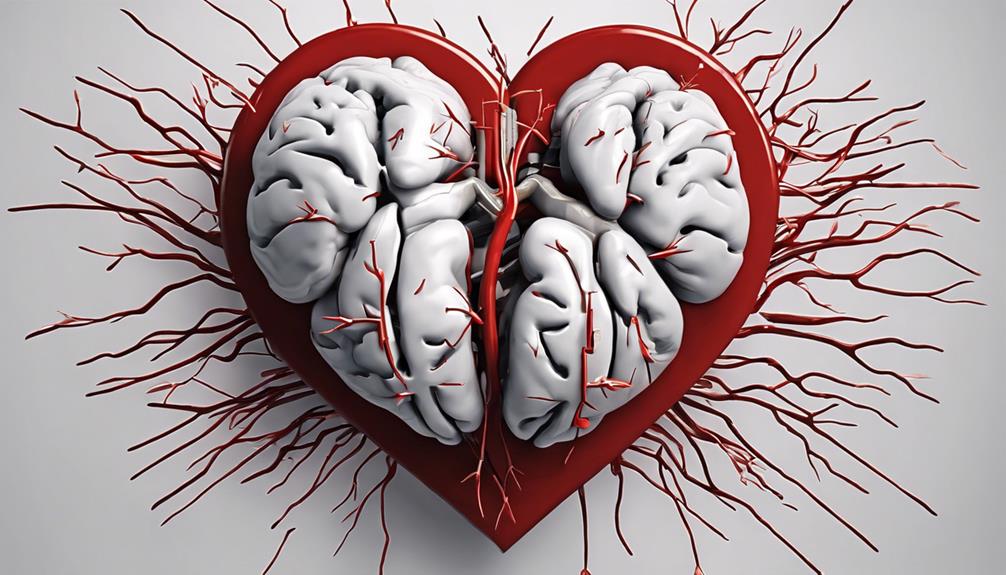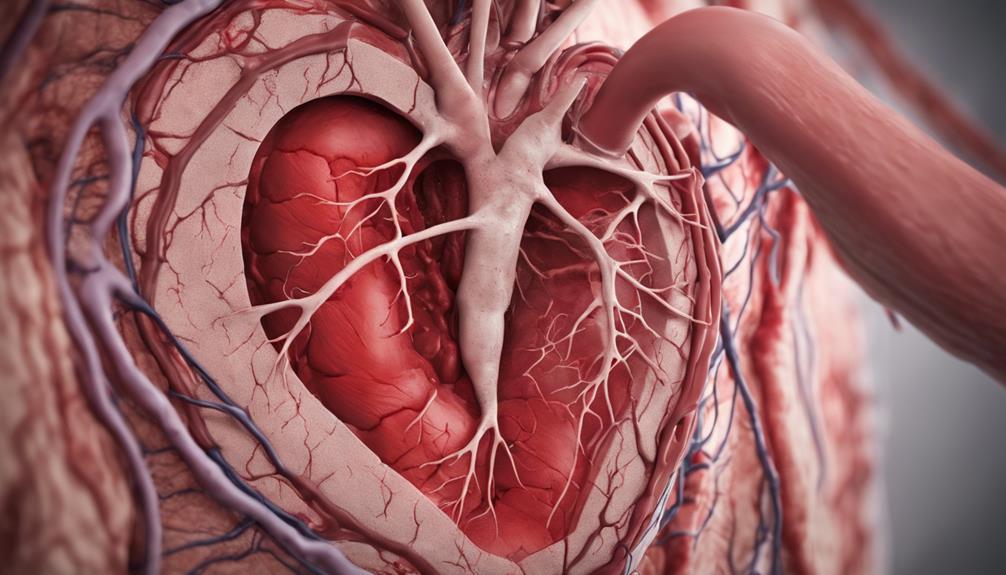Discovering the realm of Carcinoid Heart Disease is like entering a labyrinth, facing intricate and unexpected challenges throughout the journey.
The nuances of this condition reveal a fascinating interplay between cardiac health and the systemic effects of carcinoid tumors.
But what lies beyond these initial impressions, beyond the surface observations, is a deeper understanding waiting to be uncovered.
It beckons us to explore the profound impact CHD can have on patients' lives and the evolving landscape of treatment strategies.
Key Takeaways
- Symptoms include right heart failure signs and murmurs
- Diagnostic tools: echocardiography, MRI, coronary angiography
- Risk factors: serotonin impact, liver metastases, tumor manipulation
- Treatment options: somatostatin analogs, surgical resection, advanced therapies
Clinical Manifestations and Symptoms
In patients with carcinoid heart disease, the manifestation of symptoms typically involves a progressive deterioration of right-sided heart function. This deterioration can lead to various clinical manifestations such as tricuspid regurgitation murmurs, pulmonary regurgitation, and a palpable right ventricular heave upon physical examination. Patients may present with symptoms like shortness of breath, ankle edema, fatigue, and cyanosis as the disease progresses. Additionally, disease progression can result in peripheral edema, ascites, and pulsatile hepatomegaly, further complicating the clinical picture of carcinoid heart disease.
The presence of tricuspid regurgitation and pulmonary regurgitation are significant signs that healthcare providers should be vigilant for in patients with carcinoid heart disease. These signs, along with symptoms of right-sided heart failure, can guide clinicians towards a diagnosis and appropriate management strategies. Recognizing the clinical manifestations of carcinoid heart disease is crucial in providing timely intervention and improving patient outcomes.
Diagnostic Testing and Imaging
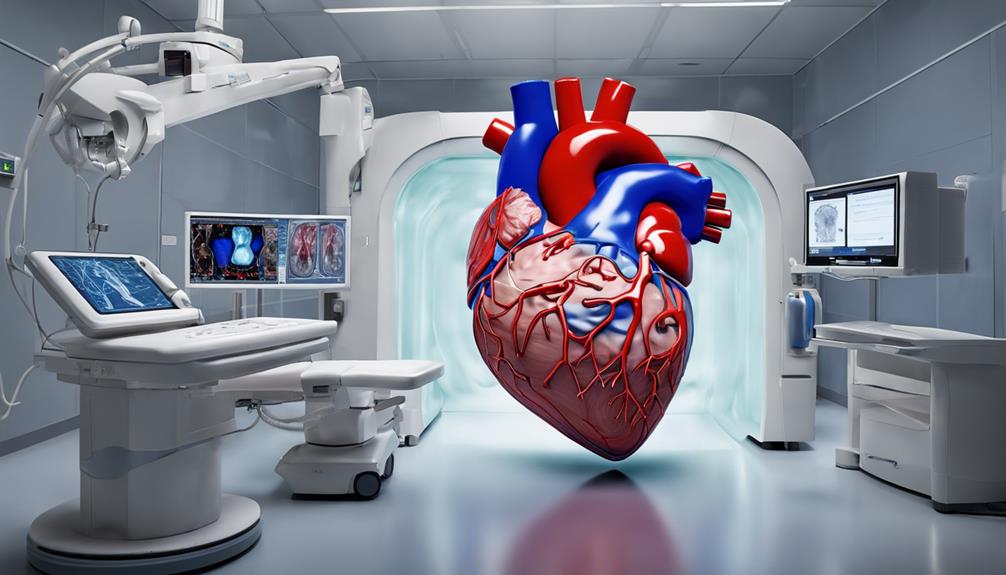
Diagnostic testing and imaging play a crucial role in confirming and assessing the extent of valve abnormalities in carcinoid heart disease, guiding treatment decisions, and monitoring disease progression.
- Echocardiography: This imaging modality is essential for diagnosing carcinoid heart disease. It allows visualization of valve thickening and regurgitation, aiding in the early detection and monitoring of cardiac involvement in patients with carcinoid syndrome.
- Cardiac MRI: Providing detailed anatomical and functional information, cardiac MRI is a valuable tool for assessing valve abnormalities associated with carcinoid heart disease. It offers a comprehensive view of the heart's structure and function, aiding in treatment planning and disease management.
- 64-slice Coronary Angiography: Similar to cardiac MRI, 64-slice coronary angiography offers detailed anatomical data for evaluating heart valve issues in patients with carcinoid heart disease. It helps in assessing the severity of valve abnormalities and guiding interventions.
- Medical Treatment and Disease Progression: Medical treatment primarily focuses on alleviating symptoms of right heart failure. Regular monitoring through cardiac imaging techniques is crucial for managing disease progression and optimizing patient outcomes in carcinoid heart disease.
Pathophysiology and Risk Factors
The pathophysiology of carcinoid heart disease stems from the impact of vasoactive substances, particularly serotonin, reaching the heart due to compromised hepatic metabolism. In this condition, right-sided heart valves are predominantly affected due to fibrosis-induced damage. Risk factors for carcinoid heart disease include the presence of metastatic tumors in the liver, which can lead to cardiac manifestations. Tumor manipulation and peptide radionuclide therapy can also trigger carcinoid heart disease in patients with neuroendocrine tumors. A key aspect of the pathophysiology involves the accumulation of tissue growth factor-β latency–associated peptide in carcinoid heart valves, contributing to valve damage.
| Risk Factors | Pathophysiology | Implications |
|---|---|---|
| Liver Metastases | Serotonin impacts heart | Right-sided valve damage |
| Metastatic Tumors | Tissue growth factor-β | Fibrosis-induced damage |
| Peptide Therapy | Vasoactive substances | Cardiac manifestations |
Treatment Approaches and Management
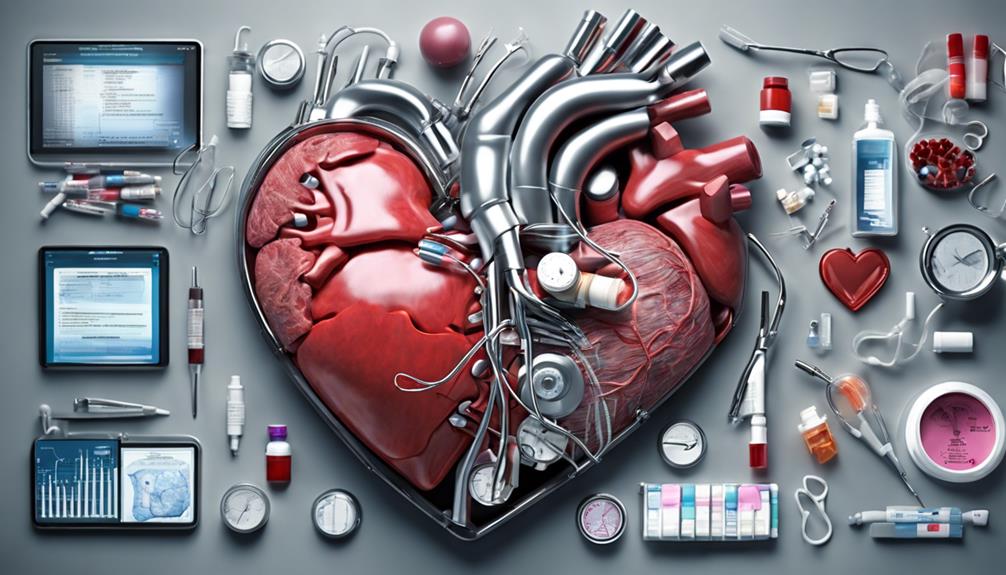
Having discussed the pathophysiology and risk factors associated with carcinoid heart disease, the focus now shifts to the effective treatment approaches and management strategies for this condition.
- Somatostatin Analogs: New therapies like somatostatin analogs have shown promise in improving symptoms and inducing tumor regression in patients with carcinoid heart disease.
- Surgical Resection: Surgical resection can be curative for nonmetastatic carcinoid heart disease, offering a potential treatment option to eliminate the primary tumor.
- Metastatic Liver Disease Management: Metastatic liver disease in patients with carcinoid heart disease can be managed through surgical debulking or hepatic artery embolization to alleviate symptoms and improve outcomes.
- Advanced Therapies: Interferon therapy, targeted radionuclide therapy, and chemotherapy are additional treatment modalities that may be considered based on individual tumor characteristics to enhance symptoms improvement, quality of life, and potentially prolong survival.
Prognosis and Long-Term Outcomes
Regular monitoring of biomarker levels and imaging techniques like echocardiography are crucial components in predicting the prognosis and long-term outcomes of patients with carcinoid heart disease. Prognostic factors such as New York Heart Association functional class III/IV symptoms, urinary and serum 5-HIAA levels, and NT-proBNP levels play a significant role in assessing disease progression and treatment response. Patients presenting with right-sided heart failure associated with carcinoid heart disease may experience a poorer prognosis compared to those without cardiac involvement. Advances in imaging techniques, particularly speckle-tracking echocardiography, have enhanced the diagnostic accuracy for carcinoid heart disease. Long-term outcomes are influenced by the management of cardiac symptoms, disease progression, and treatment response. Continuous monitoring of biomarkers and utilizing advanced imaging modalities are essential in evaluating the progression of the disease and determining the effectiveness of interventions.
| Prognostic Factors | Imaging Techniques |
|---|---|
| NYHA Class III/IV | Echocardiography |
| 5-HIAA Levels | Speckle-Tracking Echocardiography |
| NT-proBNP Levels |
Frequently Asked Questions
How Long Can You Live With Carcinoid Heart Disease?
We can live a considerable time with Carcinoid Heart Disease. The prognosis post-valve replacement varies based on the valve type, ranging from 6 to 11 years.
Bioprosthetic valves are preferable to minimize early degeneration, reducing the need for extensive anticoagulation. Conversely, mechanical valves require lifelong anticoagulation, leading to increased bleeding risk and potential reoperation.
Regular biomarker monitoring and imaging are critical to track disease progression. Prognostic indicators, like symptom severity and 5-HIAA levels, aid in predicting outcomes.
What Is the Life Expectancy of Someone With Carcinoid Syndrome?
We can't provide an exact figure for the life expectancy of individuals with carcinoid syndrome due to the variability in tumor progression and other factors.
However, early detection and proper management can positively impact prognosis. Regular monitoring, timely interventions, and treatment adherence are crucial for improving outcomes.
It's essential that individuals with carcinoid syndrome work closely with healthcare providers to optimize their care and potentially extend their life expectancy.
What Are Symptoms of Carcinoid Syndrome?
When it comes to symptoms of carcinoid syndrome, individuals may experience:
- Skin flushing
- Diarrhea
- Abdominal pain
- Wheezing
- Heart palpitations
- Facial skin lesions
- Weight loss
Additionally, bronchospasms, edema, and pellagra-like skin changes can occur. Flushing episodes are typically triggered by stress, alcohol, or certain foods, while severe diarrhea can lead to electrolyte imbalances and malnutrition.
It's crucial to monitor these symptoms closely for proper management.
What Are the Symptoms of 5 HIAA Carcinoid Syndrome?
When facing 5-HIAA carcinoid syndrome, prevalent symptoms include flushing, diarrhea, wheezing, and abdominal pain. These manifestations stem from elevated levels of 5-HIAA, a serotonin breakdown product.
Monitoring urinary 5-HIAA aids in diagnosis and gauging severity. High levels can lead to carcinoid crisis, a grave complication in neuroendocrine tumor patients.
Treatment primarily focuses on symptom control and reducing vasoactive substance production, like serotonin.
Conclusion
In conclusion, early detection and management of carcinoid heart disease are crucial for improving patient outcomes. As the adage goes, 'prevention is better than cure,' emphasizing the importance of proactive monitoring and timely interventions in this complex condition.
With a multidisciplinary approach, tailored treatment plans based on individual risk factors and disease progression can help optimize patient care and enhance long-term prognosis in individuals with carcinoid heart disease.



